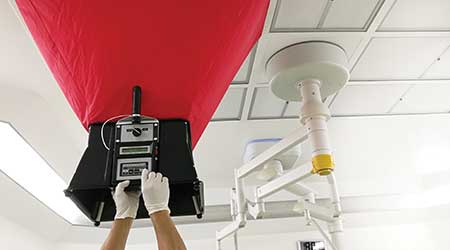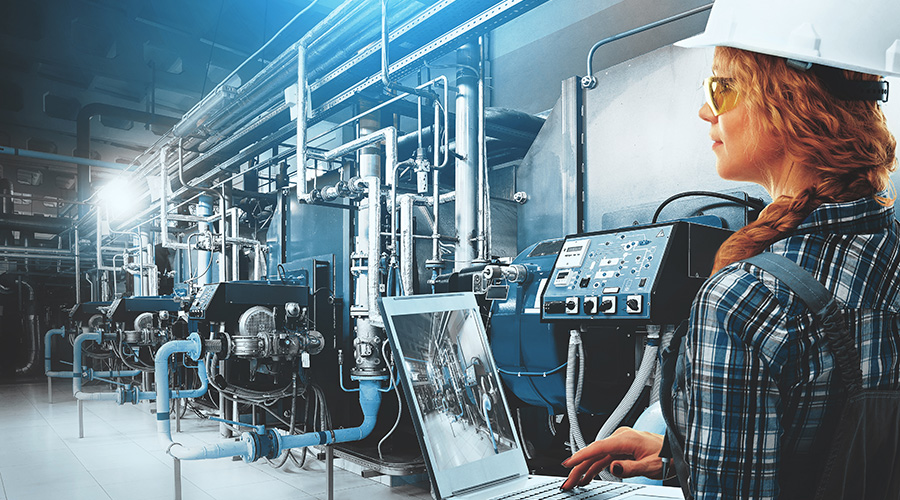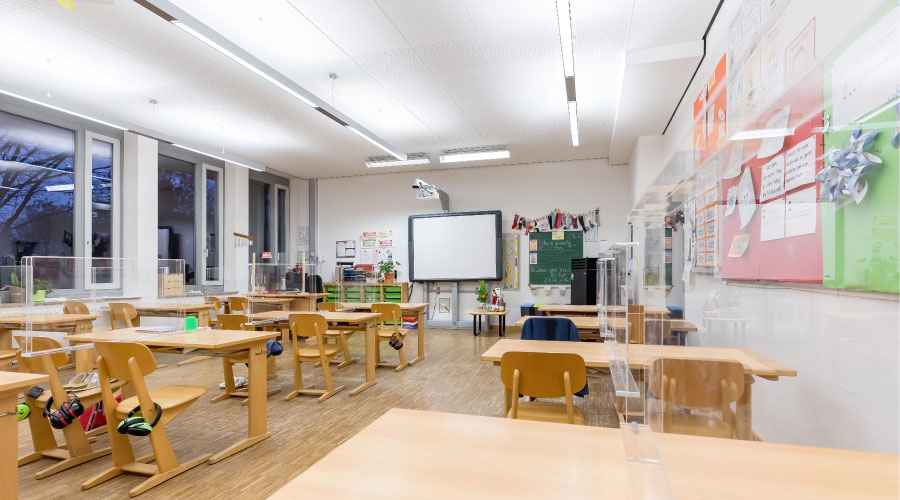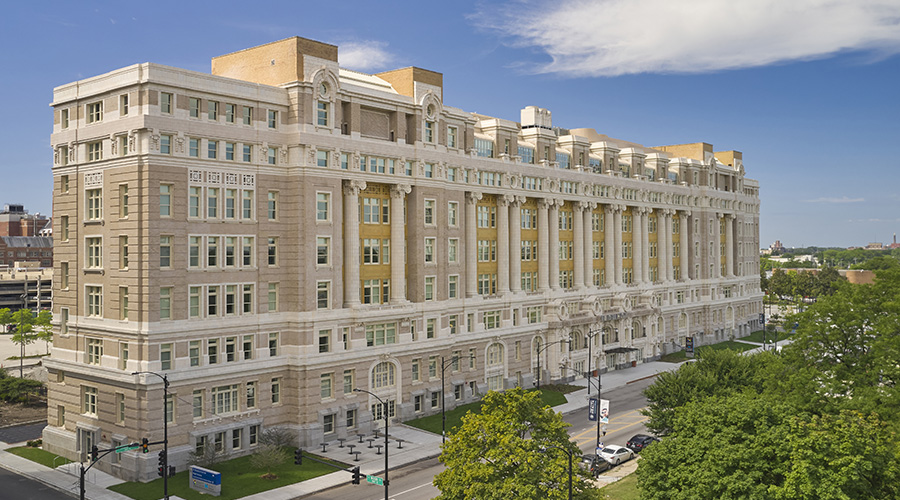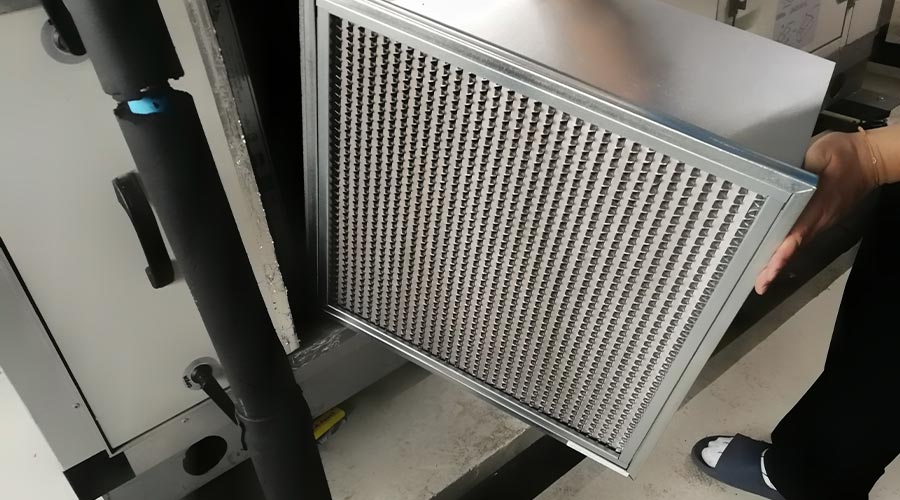4 Strategies for Advanced Air Filtration
If a full-scale capital HVAC improvement isn't in the budget, consider these four filtration-enhancement options to prevent the spread of the coronavirus.
Before, beyond, and in addition to an HVAC upgrade, building owners and operators may find it both necessary and useful to specify filtration enhancements to prevent the spread of COVID-19, Legionella, and other airborne illnesses. These may be employed due to cost, in lieu of a bigger capital project, or instituted temporarily ahead of a capital upgrade to facilitate safe tenant move-in. Like all technologies and equipment, filtration enhancements are subject to both proper specification and installation.
Consider the following filtration-enhancement options when necessary:
1. Portable air purification units. Portable high-efficiency particulate air (HEPA) filtration boxes bring the benefits of hospital-grade filtration to a facility without having to totally redesign the HVAC system. Commercial-grade air purifiers with ionization and ultraviolet (UV) are reliable and can be rolled into a conference room or office space during a pandemic or flu season without the significant costs or disruption of a capital upgrade.
Because portable HEPA filtration boxes resemble a portable air conditioning unit, they provide an additional psychological benefit to tenants that behind-the-scenes HVAC upgrades don’t — they can be seen, touched, and heard. The con? Maintenance personnel must now be trained on how to change out costly HEPA filters using proper procedures.
2. Improved filtration. While a commercial-grade air handling unit (AHU) can’t push or pull air through a 99.6 percent efficient HEPA filter – hospitals have higher-pressure HVAC systems – many can be adapted to handle a MERV 13 or higher filter. MERV 13-18 filters — the latter is just below a HEPA in effectiveness — have the ability to capture up to 75 percent of airborne pathogens. Increasing filter efficiency to the maximum allowable in your AHU with MERV 13 filters is also important for LEED credits.
3. Bipolar ionization. This central filtration system is installed on the building’s AHU and works by sending ions with a positive or negative charge into the air, causing small particles to cluster into larger particles to make them easier to capture in filters or HEPA vacuum cleaners. The ionization process also deactivates pathogens (including SARS-CoV-2 based on laboratory analysis) through hydrolysis. Further study is warranted, but the initial results are promising regarding common pathogens like the flu and cold viruses that cause absenteeism for companies. It is important to get the right ionization product for your building, as some products can cause an elevated ozone concentration in the space, causing respiratory reactions in humans.
4. Germicidal UV. Germicidal UV-C wavelengths are extremely effective at killing pathogens by destroying the outer protein layer of the pathogen, rendering it inactive. The problem is that UV-C light is also dangerous to humans and is known to cause cancer, scramble our DNA, and damage the corneas of our eyes. Most commercially available products targeted for disinfection are designed to kill pathogens on a surface, not in the air. For instance, UV-C systems are employed in hospitals and many industrial processes to disinfect equipment and products and in critical spaces when people are not present. Employing UV-C in a commercial office environment is a different matter. The systems need to be capable of providing a balance between dose and duration while maintaining the safety of humans in occupied areas. Alternatively, using a UV-C air stream cleaner with its high intensity can be extremely effective. These systems require large amounts of energy to operate, which may be a challenge for a typical building’s central AHU’s electrical distribution to handle. Also, careful considerations must be made to protect the building’s maintenance personnel.
Evaluating it all
Determining whether your facility is ready to take on a major capital project or which of the above filtration options is best for your facility as it repopulates is a challenge, as the future of most commercial facilities is unknown.
Instead, focus on what you do know. Evaluate what current and potential tenants want, including what types of potentially smaller and healthier spaces they want to come back to. Remember to take into account the existing facility and its unique characteristics and parameters — i.e., the current state of the HVAC system, chiller/boiler plant, air filtration system and its capacity for upgrades. Once there are some answers, dare to go down the road of creating a plan for your HVAC systems and what possibilities may be at play.
Often, the moments that seem to have the biggest unknowns may actually provide building owners and operators with an open plan to dream up what’s next.
David P. Callan, P.E., CEM, LEED AP, HBDP, QCxP, is senior vice president of McGuire Engineers in Chicago.
Related Topics:








